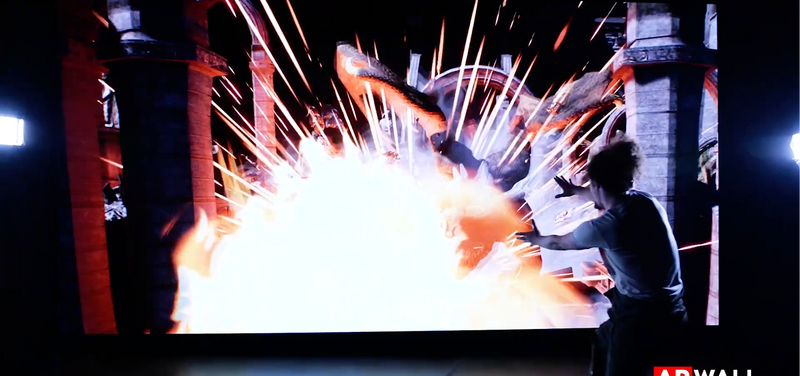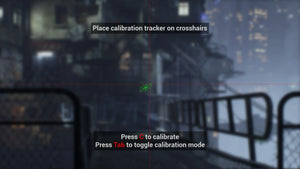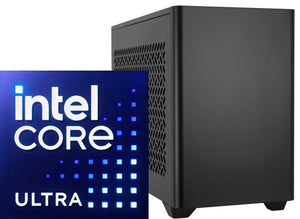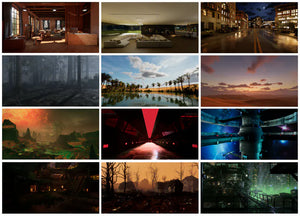What is VFX in Games? Game Visual Effects Explained

When you dive into your favorite video game and see blazing fireballs, glowing swords, smoky explosions, or even the swirling effects of a magical portal, you are experiencing VFX in games. But what is VFX in games exactly, and why is it such a vital part of modern game development?
In simple terms, VFX in games stands for Visual Effects in Games. It refers to the digital techniques used to create effects that go beyond traditional animation, such as fire, smoke, lightning, particle systems, weather simulations, and magical energy bursts. These effects are what make gameplay immersive, cinematic, and visually thrilling.
Unlike static graphics or character animations, VFX dynamically reacts to player actions, game environments, and story events, ensuring every game feels alive and exciting.
Why Understanding What is VFX in Games Matters
If you’re a game developer, animator, or even a gamer curious about the behind-the-scenes magic, understanding what is VFX in games can transform your perspective. Here are a few reasons VFX is so important:
-
Immersion and Atmosphere – VFX in games creates environments that feel real. Fire crackling in a dungeon or fog drifting through a forest enhances the atmosphere.
-
Gameplay Feedback – Explosions, sparks, and glowing hits give players instant feedback during combat or action sequences.
-
Storytelling – Weather effects, magical auras, and sci-fi portals add layers of narrative to a game’s universe.
-
Player Engagement – Well-designed VFX in video games makes the experience more thrilling and memorable.
Without strong VFX, even the most well-animated characters can feel flat, and the overall world may lack the depth needed to engage players.
What is VFX in Animation vs VFX in Games?
A common point of confusion is between what is VFX in animation and what is VFX in games.
-
Animation moves characters, objects, or scenes. For example, a character swinging a sword.
-
VFX enhances that movement with visual impact, such as sparks flying when the sword strikes metal or a trail of fire following the blade.
While both are crucial, VFX in games is unique because it has to work in real-time. Unlike films or animated shorts where effects are pre-rendered, video game VFX must be optimized for performance so the game runs smoothly.
This makes tools like VFX in Unreal Engine 5, VFX in Unity, and VFX in Blender essential for real-time rendering and optimization.

Examples of VFX in Video Games
Still wondering what is VFX in games in practical terms? Let’s look at examples where VFX defines the player experience:
-
Explosions in action games – Gunfire, debris, and smoke.
-
Magic spells in RPGs – Fireballs, glowing shields, portals.
-
Weather systems – Rain, fog, thunderstorms.
-
Sci-fi energy effects – Laser blasts, futuristic shields, holograms.
-
Environmental details – Dust in deserts, waves on beaches, sparks from machinery.
Each of these effects not only looks stunning but also gives players cues about the game world and their interactions within it.
Tools and Software for Creating VFX in Games
To truly understand what is VFX in games, you need to know the tools developers use to create them.
VFX in Unreal Engine 5
Unreal Engine 5 has revolutionized how VFX is made in games. Its Niagara VFX system allows designers to create complex particle effects, from realistic fire to magical energy blasts. Many professionals and students learn via resources like Udemy – VFX in Unreal Engine 5, where they can practice designing high-quality effects.
VFX in Unity
Unity provides an accessible yet powerful particle system for VFX. Developers often use Unity for mobile and indie games because of its flexibility. With Unity’s system, you can simulate smoke, sparks, glowing orbs, and more.
VFX in Blender
Blender is a free and open-source software that excels at 3D modeling and VFX simulations. Many beginners learn how to make VFX in Blender, because it provides fire, smoke, and liquid simulation tools at no cost. It’s also frequently used to prototype effects before integrating them into engines like Unity or Unreal.
The Process of Making VFX in Games
Understanding what is VFX in games also means knowing how these effects are made. While the process varies depending on the project and engine, it generally follows these steps:
-
Concept Design – Artists sketch out the idea (e.g., a fire spell or explosion).
-
Simulation in Software – Using Blender, Unity, or Unreal to create the initial particle system.
-
Shaders and Materials – Adding realism with glow, transparency, and distortions.
-
Engine Integration – Importing the VFX into the game engine for testing.
-
Optimization – Ensuring effects don’t slow down gameplay, especially in large-scale battles.
By carefully blending artistry and technical performance, developers ensure players experience stunning VFX without frame drops or lag.

Professional VFX Services for Games
Now that you know what is VFX in games, let’s talk about how you can use it to upgrade your own projects. Whether you’re building an indie game, a VR simulation, or a large-scale AAA title, professional VFX can take your visuals from good to outstanding.
Our team specializes in designing custom VFX in games using industry-leading tools like Unreal Engine 5, Unity, and Blender. From explosive combat effects to atmospheric environments, we create visuals that excite players and enhance gameplay.
Our VFX Services Include
✔ Game VFX Design – Fire, smoke, explosions, water, electricity, and particle systems.
✔ Cinematic VFX in Games – Cutscenes, intros, and trailers with movie-quality effects.
✔ Environment Effects – Weather, fog, dust, water, and atmospheric particle systems.
✔ Stylized VFX – Cartoon-style, low-poly, or abstract effects for unique art styles.
✔ Engine-Specific Solutions –
-
VFX in Unreal Engine 5 using Niagara.
-
VFX in Unity with optimized particle systems.
-
How to make VFX in Blender pipelines for prototyping and export.
✔ Optimization for Performance – Ensuring VFX looks stunning without hurting FPS.
Why Choose Us for VFX in Games?
When you’re looking for VFX professionals, you need more than flashy visuals. You need a partner who understands what is VFX in games from a technical, creative, and player-focused perspective.
Here’s what makes us different:
-
Game Industry Expertise – We know the balance between great visuals and smooth gameplay.
-
Cross-Platform Skills – VFX that works in PC, console, mobile, and VR games.
-
Creative Excellence – We don’t just add effects; we craft memorable experiences.
-
Performance Optimization – Effects built to look amazing while keeping games responsive.
-
Continuous Learning – Our team studies the latest tools (like Udemy – VFX in Unreal Engine 5) to stay ahead.
How We Work
We follow a clear and collaborative process when delivering VFX in games:
-
Consultation – Understanding your game style, mechanics, and goals.
-
Concept Art & Storyboarding – Initial sketches of the effects.
-
Prototyping in Blender/Unreal/Unity – Early tests to align with your vision.
-
Development & Refinement – Adding realism or stylization with shaders and particle systems.
-
Integration – Ensuring VFX works smoothly in your game engine.
-
Testing & Optimization – Stress-testing for performance, scalability, and consistency.
This workflow ensures that the VFX we deliver is not only visually impressive but also perfectly tailored to your game mechanics and style.

Ready to Elevate Your Game with VFX?
Now that you understand what is VFX in games and how powerful it can be, it’s time to put that knowledge into action. Whether you need VFX in video games, VFX in Unity, or want to explore how to make VFX in Blender, our team can help.
👉 Let’s create visual effects that players will never forget.




